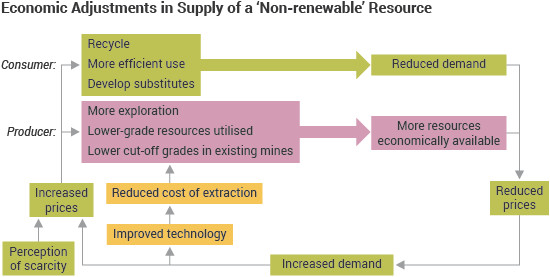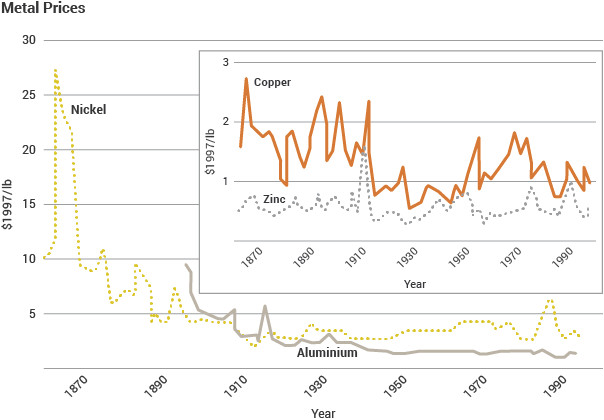Exploring the world of rocks reveals a fascinating diversity, but pinpointing exactly how many different rocks there are is a complex task. Rockscapes.net is here to guide you through this geological landscape, explaining the main rock types and their seemingly endless variations, offering a glimpse into the Earth’s dynamic composition. Discover the beauty and variety of natural stone, providing inspiration for your landscape designs.
1. Understanding the Main Rock Types
The Earth’s crust is composed of a wide array of rocks, but instead of focusing on a single number, understanding the different rock types is key. Rocks are generally classified into three main groups based on their formation processes: igneous, sedimentary, and metamorphic.
- Igneous Rocks: Formed from the cooling and solidification of magma or lava.
- Sedimentary Rocks: Formed from the accumulation and cementation of sediments.
- Metamorphic Rocks: Formed when existing rocks are transformed by heat, pressure, or chemical reactions.
1.1. Igneous Rocks: Born from Fire
Igneous rocks are formed from the cooling and solidification of molten rock, either magma (below the Earth’s surface) or lava (above the Earth’s surface). There are two main types: intrusive and extrusive.
- Intrusive Igneous Rocks: These rocks cool slowly beneath the Earth’s surface, allowing large crystals to form. Granite is a classic example, known for its coarse-grained texture and durability, which makes it a popular choice for countertops and landscaping.
- Extrusive Igneous Rocks: These rocks cool quickly on the Earth’s surface, resulting in small or no crystals. Basalt is a common extrusive rock, often used in construction and landscaping due to its dark color and fine-grained texture.
 Granite rock used for countertops and landscaping
Granite rock used for countertops and landscaping
1.2. Sedimentary Rocks: Layers of Time
Sedimentary rocks are formed from the accumulation and cementation of sediments, such as mineral grains, rock fragments, and organic matter. These rocks often form in layers, providing a historical record of the Earth’s past.
- Clastic Sedimentary Rocks: These are formed from fragments of other rocks and minerals. Sandstone, composed of cemented sand grains, is a popular building material known for its durability and aesthetic appeal.
- Chemical Sedimentary Rocks: These are formed from the precipitation of minerals from water. Limestone, often formed from the accumulation of marine organisms, is widely used in construction and landscaping.
- Organic Sedimentary Rocks: These are formed from the accumulation of organic matter. Coal, formed from the remains of ancient plants, is a significant energy source.
 Sandstone rock used as a building material
Sandstone rock used as a building material
1.3. Metamorphic Rocks: Transformed by Pressure
Metamorphic rocks are formed when existing rocks are transformed by heat, pressure, or chemical reactions. This process can change the rock’s mineral composition, texture, and structure.
- Foliated Metamorphic Rocks: These rocks have a layered or banded appearance due to the alignment of minerals under pressure. Slate, formed from shale, is a common example, often used for roofing and paving.
- Non-Foliated Metamorphic Rocks: These rocks do not have a layered appearance. Marble, formed from limestone, is prized for its beauty and is used in sculptures, countertops, and building facades.
 Slate rock used for roofing and paving
Slate rock used for roofing and paving
2. The Enormous Variety of Rocks: Why a Specific Number Is Elusive
While we can categorize rocks into these three main types, the variations within each type are extensive. Factors such as mineral composition, texture, and formation conditions contribute to this diversity.
- Mineral Composition: Different minerals combine in various proportions to create different rocks. For example, granite can contain varying amounts of quartz, feldspar, and mica, resulting in different appearances and properties.
- Texture: The size, shape, and arrangement of mineral grains affect the rock’s texture. Igneous rocks can be coarse-grained (like granite) or fine-grained (like basalt), while sedimentary rocks can be clastic (composed of fragments) or crystalline (composed of interlocking crystals).
- Formation Conditions: The specific conditions under which a rock forms, such as temperature, pressure, and chemical environment, can significantly influence its characteristics. Metamorphic rocks, for instance, can exhibit different textures and mineral compositions depending on the intensity of metamorphism.
Given these variables, it’s challenging to assign a definitive number to the types of rocks in the world. The classification of rocks often depends on the level of detail required. While geologists may identify thousands of specific rock types based on detailed analysis, for practical purposes, rocks are often grouped into broader categories.
3. Estimated Rock Type Count
There is no definitive number of different rocks in the world, however based on geological surveys and scientific research, there are about 4,000 – 5,000 types of minerals. Rocks, being composed of one or more minerals, have a far greater number of combinations and variations.
- Igneous Rocks: Over 700 types are known.
- Sedimentary Rocks: Over 2,700 types are known.
- Metamorphic Rocks: Over 600 types are known.
It’s important to note these numbers are approximate. The exact number of rock types can vary depending on how they are classified and the criteria used. Continuous discovery of new rock formations and ongoing geological research may alter these figures over time.
4. Factors Affecting Rock Classification
The classification of rocks is influenced by several factors, including mineral content, chemical composition, texture, and origin. Let’s explore these factors in more detail:
4.1. Mineral Content
The types and proportions of minerals present in a rock are crucial for its identification. For example, granite typically contains quartz, feldspar, and mica, while basalt is rich in plagioclase and pyroxene.
4.2. Chemical Composition
The overall chemical makeup of a rock provides insights into its origin and formation conditions. Geologists use chemical analyses to determine the abundance of various elements and compounds, which helps in classifying and understanding the rock.
4.3. Texture
Texture refers to the size, shape, and arrangement of mineral grains within a rock. Texture can range from coarse-grained (phaneritic) to fine-grained (aphanitic) or glassy (vitreous).
4.4. Origin
The process by which a rock formed is a primary factor in its classification. Igneous rocks form from molten magma, sedimentary rocks from accumulated sediments, and metamorphic rocks from pre-existing rocks altered by heat and pressure.
5. Rock Identification Techniques
Identifying rocks involves a combination of visual inspection and laboratory analysis. Here are some common techniques used by geologists:
5.1. Visual Inspection
Initial identification often starts with visual examination. Geologists look for clues such as color, grain size, layering, and the presence of certain minerals.
5.2. Hardness Tests
The Mohs hardness scale is used to assess a mineral’s resistance to scratching. By comparing a rock’s hardness to known minerals, geologists can narrow down its possible identity.
5.3. Acid Tests
Acid tests are used to identify carbonate minerals, such as calcite, which react with hydrochloric acid to produce carbon dioxide gas.
5.4. Microscopic Analysis
Examining thin slices of rock under a microscope allows geologists to identify minerals and study their arrangement, providing valuable information about the rock’s history and formation.
5.5. Chemical Analysis
Chemical analysis involves determining the elemental composition of a rock. Techniques such as X-ray fluorescence (XRF) and inductively coupled plasma mass spectrometry (ICP-MS) are used to measure the concentration of various elements.
6. The Ever-Changing Nature of Rock Classification
Rock classification is not static; it evolves as new discoveries are made and scientific understanding advances. Here are a few examples of how rock classification has changed over time:
6.1. New Rock Types
Occasionally, geologists discover new rock types that do not fit neatly into existing categories. These discoveries lead to revisions in classification schemes and the addition of new rock names.
6.2. Reclassification of Existing Rocks
Sometimes, rocks that were once classified as one type are reclassified as another based on new information or a better understanding of their origin and formation.
6.3. Advances in Analytical Techniques
Improved analytical techniques, such as high-resolution microscopy and advanced chemical analysis, provide more detailed information about rock composition and structure, leading to more refined classification schemes.
7. Applications of Rock Knowledge
Understanding rock types and their properties has numerous practical applications in various fields:
7.1. Construction
Different rocks are used in construction based on their strength, durability, and aesthetic appeal. Granite, sandstone, and limestone are commonly used as building materials.
7.2. Landscaping
Rocks are used in landscaping to create visually appealing and functional outdoor spaces. Rock gardens, pathways, and retaining walls are popular applications.
7.3. Mining
Identifying and classifying rocks is essential for locating and extracting valuable mineral resources.
7.4. Environmental Science
Understanding rock types and their weathering processes is important for studying soil formation, erosion, and water quality.
8. The Beauty and Versatility of Rocks in Landscaping
At Rockscapes.net, we appreciate the unique beauty and versatility that rocks bring to landscaping. Whether you’re looking to create a serene rock garden, a striking water feature, or a durable pathway, we offer a wide selection of high-quality rocks to suit your needs.
8.1. Rock Gardens
Rock gardens are a classic landscaping feature that showcases the natural beauty of rocks and plants. Choose from a variety of rock sizes, shapes, and colors to create a visually stunning display.
8.2. Water Features
Rocks can be used to create stunning water features, such as waterfalls, ponds, and fountains. The sound of water cascading over rocks adds a sense of tranquility to any outdoor space.
8.3. Pathways
Rocks can be used to create durable and attractive pathways. Flagstone, gravel, and cobblestones are popular choices for pathways that blend seamlessly with the natural environment.
9. Finding Inspiration and Expertise at Rockscapes.Net
Ready to start your own rock landscaping project? Visit Rockscapes.net for inspiration, information, and expert advice.
- Extensive Image Galleries: Browse our extensive image galleries for ideas and inspiration.
- Detailed Product Information: Learn about the characteristics and applications of different rock types.
- Expert Consultations: Consult with our team of experienced landscape designers for personalized recommendations.
- Quality Products: Source high-quality rocks and landscaping materials from trusted suppliers.
Let Rockscapes.net be your partner in creating beautiful and sustainable outdoor spaces.
10. Frequently Asked Questions (FAQs) About Rock Types
10.1. How Are Rocks Classified?
Rocks are classified based on their origin, mineral composition, chemical composition, and texture. The three main categories are igneous, sedimentary, and metamorphic.
10.2. What Are Igneous Rocks?
Igneous rocks are formed from the cooling and solidification of magma or lava. They can be intrusive (cooling slowly beneath the Earth’s surface) or extrusive (cooling quickly on the Earth’s surface).
10.3. What Are Sedimentary Rocks?
Sedimentary rocks are formed from the accumulation and cementation of sediments, such as mineral grains, rock fragments, and organic matter.
10.4. What Are Metamorphic Rocks?
Metamorphic rocks are formed when existing rocks are transformed by heat, pressure, or chemical reactions.
10.5. How Can I Identify Different Rocks?
You can identify rocks by visual inspection, hardness tests, acid tests, microscopic analysis, and chemical analysis.
10.6. What Is the Mohs Hardness Scale?
The Mohs hardness scale is used to assess a mineral’s resistance to scratching. It ranges from 1 (talc) to 10 (diamond).
10.7. What Are Some Common Rocks Used in Construction?
Common rocks used in construction include granite, sandstone, limestone, and slate.
10.8. How Are Rocks Used in Landscaping?
Rocks are used in landscaping to create rock gardens, water features, pathways, and retaining walls.
10.9. Where Can I Find High-Quality Rocks for Landscaping?
You can find high-quality rocks for landscaping at Rockscapes.net.
10.10. Can Rock Classifications Change?
Yes, rock classifications can change as new discoveries are made and scientific understanding advances.
Uncover the earth’s rocky mysteries with Rockscapes.net, where you can explore an impressive array of rock formations and landscape design concepts. Whether you’re in the United States, particularly in Arizona, Rockscapes.net is ready to turn your outdoor space into a masterpiece of natural beauty. Contact us at 1151 S Forest Ave, Tempe, AZ 85281, United States, call +1 (480) 965-9011, or visit our website rockscapes.net today for more information.